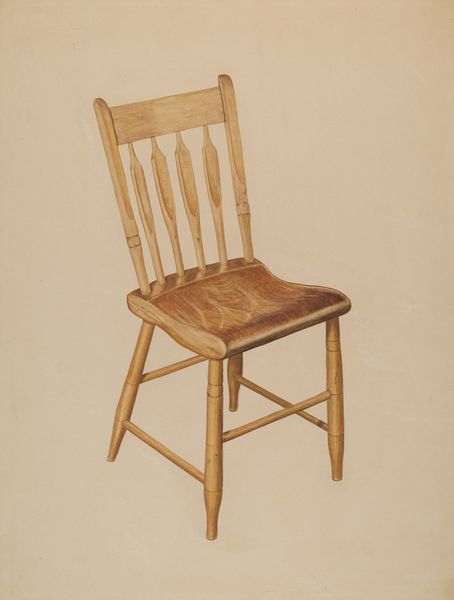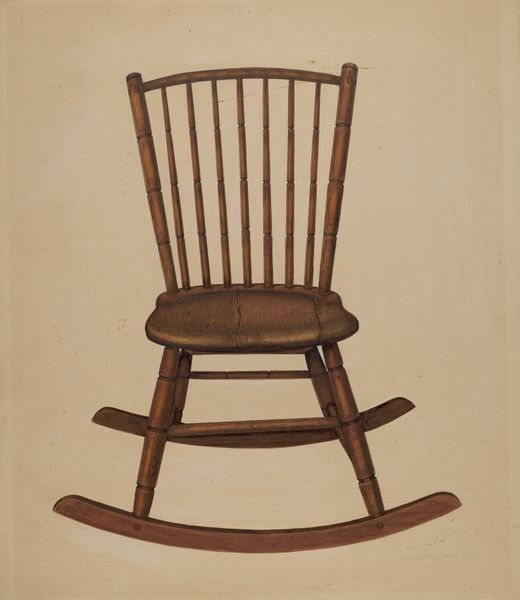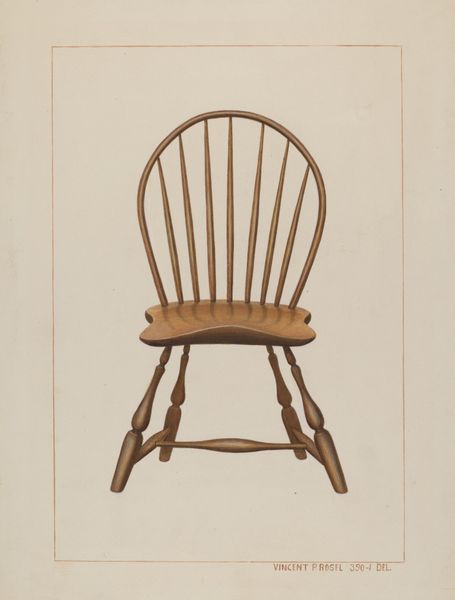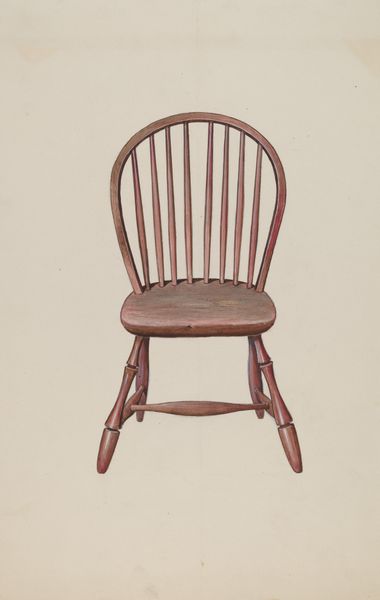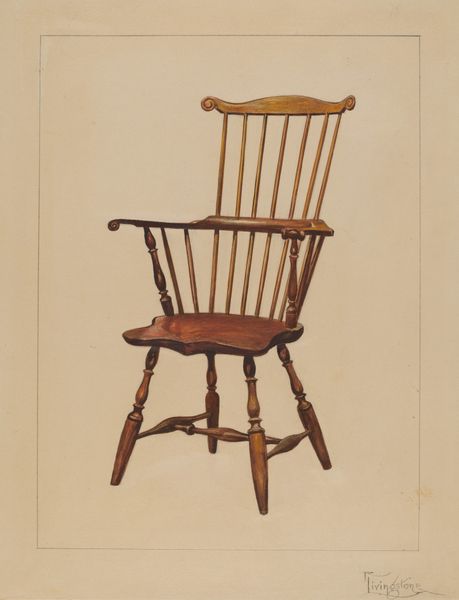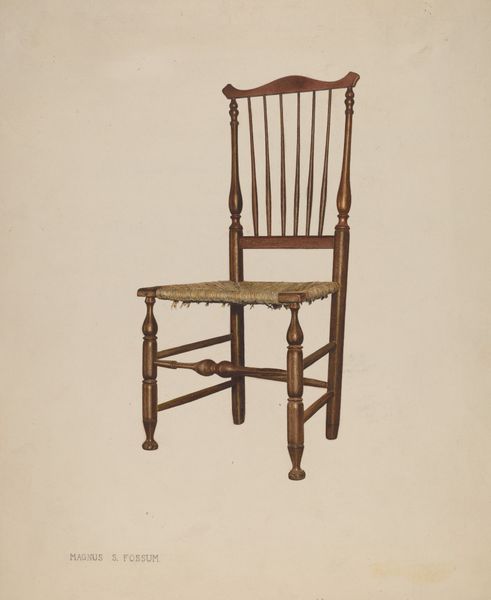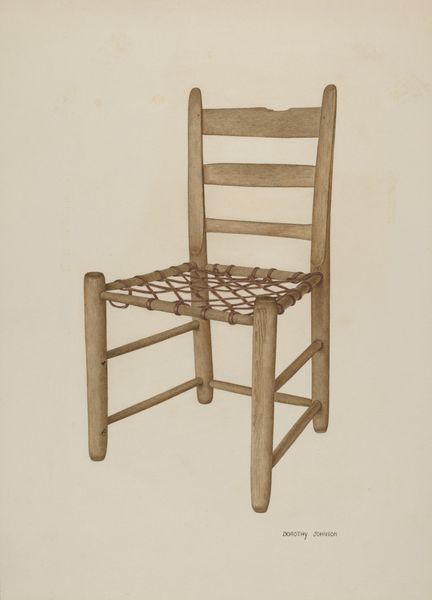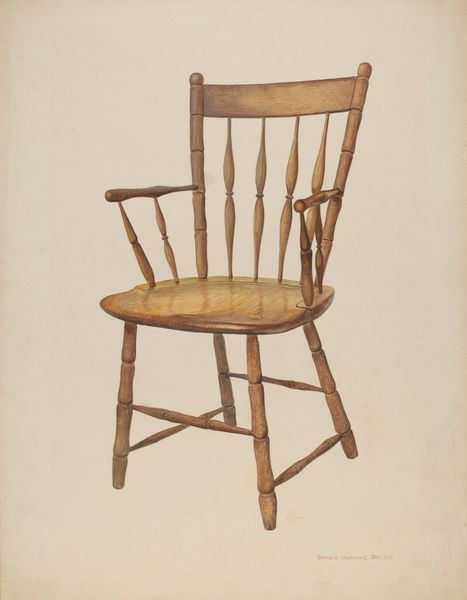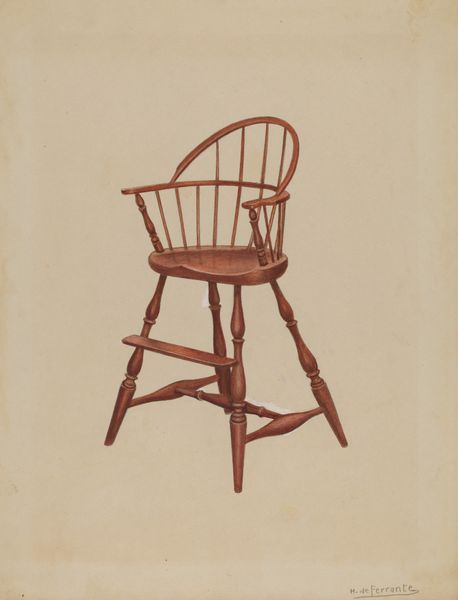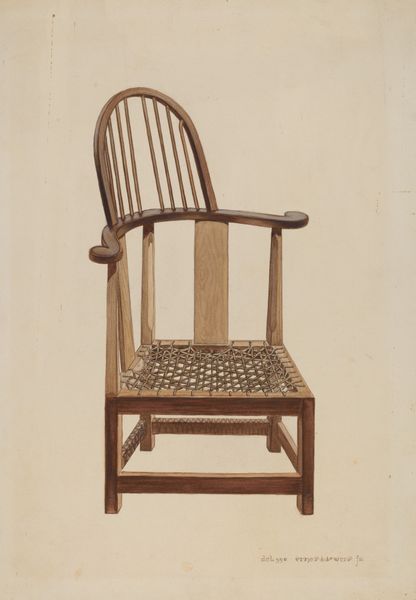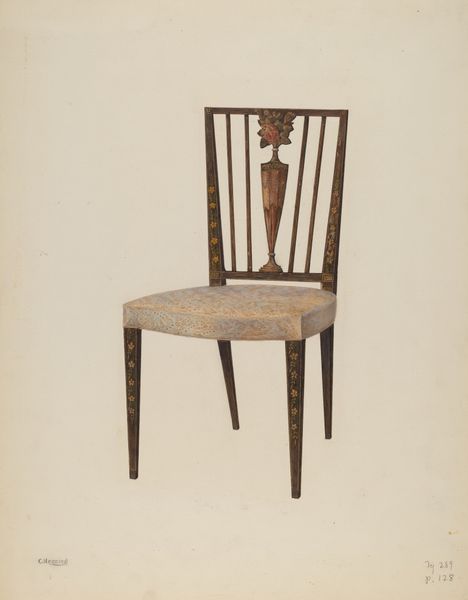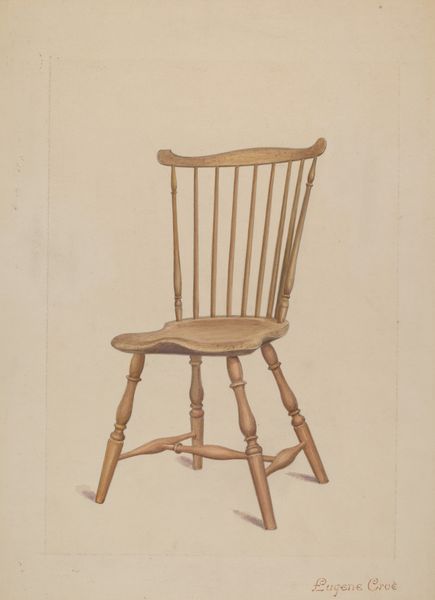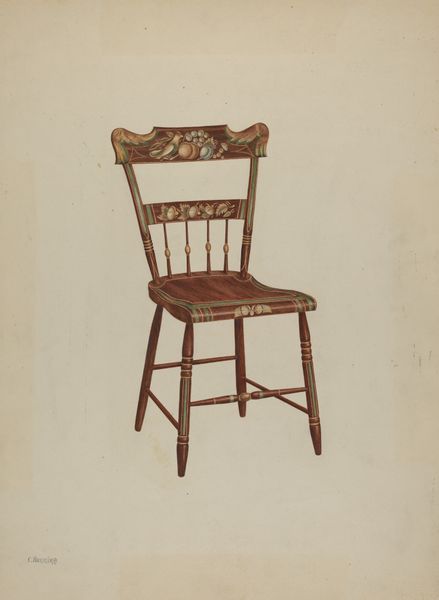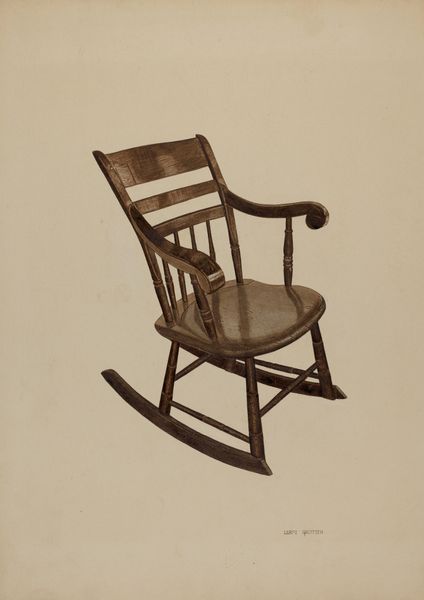
drawing, watercolor
#
drawing
#
watercolor
#
pencil drawing
#
watercolour illustration
#
watercolor
Dimensions: overall: 35.5 x 26.7 cm (14 x 10 1/2 in.) Original IAD Object: 36"high; 22"wide; 15 3/4"deep. See data sheet for exact dets.
Copyright: National Gallery of Art: CC0 1.0
Curator: Looking at this piece, the first thing that strikes me is its simplicity, and quiet, almost nostalgic charm. Editor: Indeed. Here we have Roger Deats's "Windsor Comb-Back Chair," created in 1940. The work consists of watercolor and pencil drawing. It’s a direct representation, lacking pretense. What are your thoughts on that first impression? Curator: I immediately begin to consider what an object like a chair represents for Deats and his process of production. It points toward a utilitarian, hand-made culture. There's something inherently honest about representing such an object. I am captivated by its form—a very practical seat produced with such care and dedication. Editor: And what do you think that form says about its cultural and social moment in 1940? Chair designs are not exactly the focus of cultural rebellion or upheaval! It appears quaint, removed, perhaps? Curator: But consider that even the everyday, mass produced objects reflect our socio-economic conditions and aesthetic values. And something like the Windsor chair would still harken back to the lineage of artisanal craft in the early days of industry in the US. Its representation is important because chairs like these provided social spaces, seats at dining tables and parlors: key support mechanisms. Editor: You are correct in emphasizing its societal context. How a common design gains prominence says much. Its placement within certain interiors is telling. Who could access and own one, what status symbols it held. These Windsor chairs could indicate certain class aspirations as they are being mass produced but still hint at the artisanal quality. Curator: And even though it's a drawing, look at the grain of the wood depicted so accurately, each stroke feels like a caress. This suggests to me a reverence for the material, a knowledge and skill tied directly to labor. Editor: And I will reflect on that material production and consider the larger cultural factors contributing to the value we now assign it, presented in a gallery instead of a dining room. Curator: A perfect point: we bring disparate interpretations and understandings but we can ultimately unite around recognizing and appreciating something well-made, by human hand. Editor: Exactly, and now seeing Deats’ artistic tribute, one can find joy and inspiration in everyday objects.
Comments
No comments
Be the first to comment and join the conversation on the ultimate creative platform.
